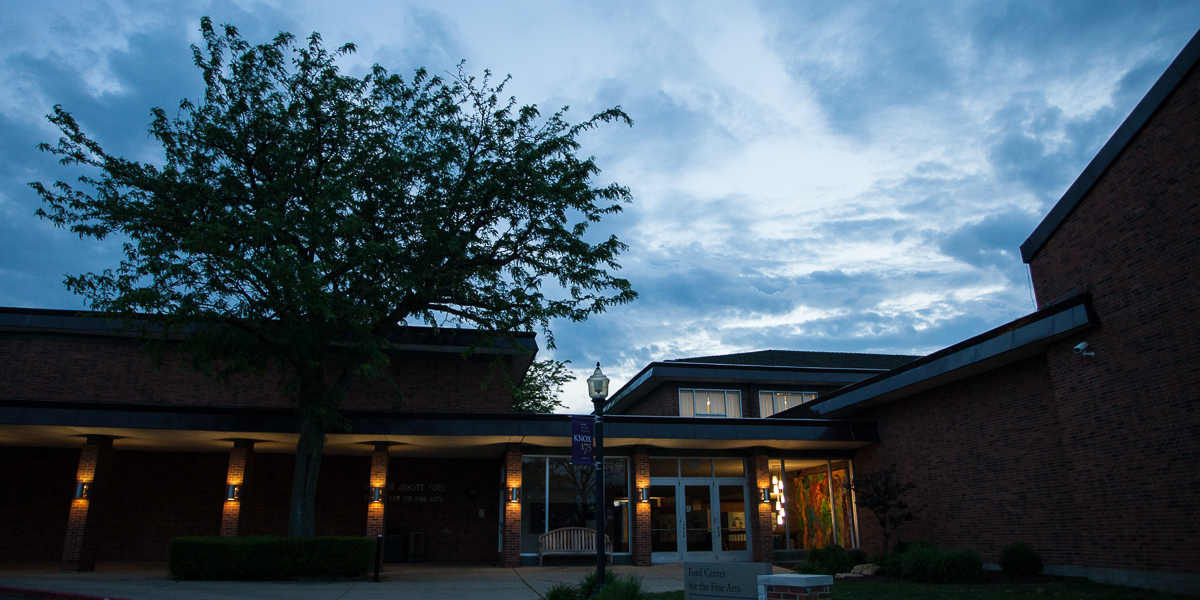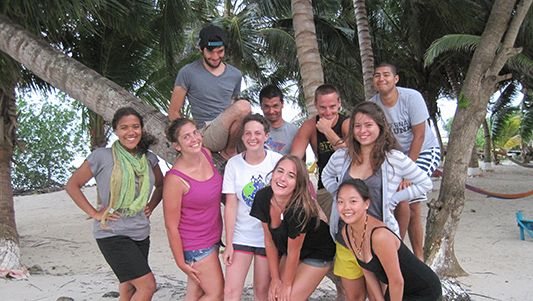

Venture Boldly

Office of Communications
2 East South Street
Galesburg, IL 61401


Ten Knox College students recently snorkeled in the ocean off Belize to examine aquatic life, and they traveled throughout the Caribbean country, interacting with its residents and visiting ancient Mayan sites.
The two-week trip was an extension of a spring term 2012 course about Belize's marine biology. Knox faculty member Linda Dybas taught "Marine Biology: Field Research on the Belizean Barrier Reef" on the Knox campus, and she co-led the Belize trip with Miava Reem, technical assistant in the Department of Biology.
"This course is interdisciplinary," said Dybas, who is Watson Bartlett Professor and chair of the Department of Biology. "I teach mostly about marine biology in Belize, and also a little bit about the politics, the history, the cultural mixes, and economic development in Belize."
Students said that traveling to Belize helped them to expand on their classroom knowledge.
"What I gained from the trip was insight into what work goes into being a marine biologist and (insight into) the other kinds of ecosystems that exist around the world," said Arnold Salgado, a Knox senior from Chicago, Illinois.
"It was really cool seeing the dinner-plate sized jellyfish and the red fire sponges on the swamps, as well as the fire coral around (Tobacco) Caye," added Salgado, a biology major who is minoring in chemistry. "I was particularly interested in studying the organisms and their interactions with each other on a day-to-day basis."
"The coolest thing on Tobacco Caye was snorkeling and being able to see the coral reef and the animals in person," said Zoe Kudla, a senior history major from Ypsilanti, Michigan, with a minor in biology. "I knew it was going to be a great experience, and it exceeded my expectations." (Photo at top of page: Knox students on Tobacco Caye in Belize.)
Dybas has taken Knox students to Belize every other year since 2006. She said that Belize is an outstanding place to study marine biology because of its natural features, including mangrove forests, underwater caves, atolls, and the Belize Barrier Reef -- the largest in the Northern Hemisphere.
In addition, she said, "It has almost every eco-system: a high mountain ridge, lower mountains, plains, and the wonderful coastline. Because English is the primary language, Knox students can interact easily with residents of Belize and "have really interesting conversations with people their own age."
"It's a wonderful mix of things in a very small space," Dybas said.
The group spent about a week at Tobacco Caye -- pronounced "key" -- a small island about 15 miles off the central Belize coast, near the city of Dangriga.
"Students had plenty of opportunity to look at the various ecosystems that are not visible from the surface of the water. We went out by the front end of the reef, the back end of the reef, and a lagoon that's between Tobacco Caye and the reef," Dybas said. "There are a lot of things to see just by snorkeling."
While on land, the group's stops included the Smithsonian National Museum of Natural History's Carrie Bow Cay Field Station and historic Mayan sites at Xuantunich, Cahal Pech, and Lamanai.
The students also met Maria Sharp, an entrepreneur who has built a business that produces a line of organic hot sauces, jams, and jellies, and visited her factory near Dangriga.
"We do a whole mix of things, and we try to put together a picture of a country that is spectacularly beautiful, with great people," Dybas said. "It never fails to amaze me how much more there is to see and learn and do in Belize."
Published on August 27, 2012